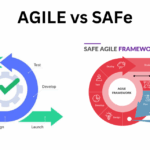Home / Our Blog / How to set product goals? A guide for project managers
How to set product goals? A guide for project managers
Jul 22, 2025 Educational
Setting clear product goals is like giving your team a road map. Without them, you risk wasting time, misaligning priorities, and losing sight of what really matters. Whether you’re launching a new product or optimizing an existing one, product goals help keep you focused and strategic.
Let’s break down what product goals are, how to set them effectively, and how tools like Scrum Slate can help.
What is a product goal?
A product goal is a specific, measurable objective that guides the development and evolution of a product. Think of it as a north star, it aligns your product team, stakeholders, and roadmap toward a shared vision.
Unlike a vision statement, which is aspirational, a product goal is action-oriented. It defines what you want to achieve and why it matters, often over a medium timeframe (one or more sprints in Agile, for example). Good product goals help you prioritize features, validate assumptions, and track progress.
“The Product Goal describes a future state of the product which can serve as a target for the Scrum Team to plan against.” – Scrum.org
How to set effective product goals?
Here’s how you can set product goals that are not just well-intentioned but actually drive results:
1. Start with the Product Vision
Before setting goals, make sure your product vision is crystal clear. This vision answers the “why” behind everything you do. Every goal should support this overarching direction.
2. Understand Your Users
Use data, feedback, and market research to know what your users truly need. Product goals should solve real problems, not just reflect internal desires.
3. Make Your Goals SMART
Product goals should be Specific, Measurable, Achievable, Relevant, and Time-bound. Vague goals like “Improve user experience” are hard to act on. Instead, aim for something like:
“Increase mobile app retention by 15% in the next two quarters.”
4. Align with Business Objectives
Tie product goals to broader business KPIs. If your company wants to expand into new markets, your goal might focus on localizing the user experience or integrating with regional partners.
5. Collaborate Across Teams
Work with marketing, sales, customer success, and engineering. Great goals are built through collaboration, not in isolation.
6. Prioritize Ruthlessly
Use frameworks like ICE (Impact, Confidence, Effort) or RICE (Reach, Impact, Confidence, Effort) to choose which goals matter most right now.
7. Review and Iterate
Goals aren’t static. Set regular checkpoints (e.g., sprint reviews or quarterly planning) to review progress and adjust if needed.
Effective Product Goals Example
To give you a clearer picture, here are a few examples of well-structured product goals:
- Launch a self-service onboarding flow to reduce customer onboarding time by 30% in Q3.
- Achieve 90% test coverage on the new feature module within 6 weeks.
- Increase Net Promoter Score (NPS) from 45 to 60 by end of the year.
- Expand into two new European markets by localizing product content and payment systems by Q2.
Use Scrum Slate for Product Management
Setting goals is just the first step. Tracking them, staying aligned, and adapting over time is where the real work happens. That’s where Scrum Slate comes in.
Scrum Slate is a purpose-built platform for Agile product teams. It helps you:
- Define and manage product goals across teams and timelines
- Align your backlog and sprints to your long-term goals
- Track progress with dashboards and goal metrics
- Collaborate in real time with stakeholders
With Scrum Slate, your goals don’t sit in a doc collecting dust, they actively drive your product forward.
Effective product goals create clarity, drive alignment, and keep your team focused on outcomes. Start with your vision, involve your users and stakeholders, and track your goals using tools like Scrum Slate. When done right, product goals turn ambition into action.









